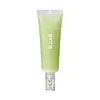What's inside
What's inside
 Key Ingredients
Key Ingredients

 Benefits
Benefits

 Concerns
Concerns

No concerns
 Ingredients Side-by-side
Ingredients Side-by-side

Water
Skin ConditioningNiacinamide 10%
SmoothingButylene Glycol
HumectantArbutin 2%
AntioxidantAllantoin
Skin ConditioningDipotassium Glycyrrhizate
HumectantLindera Erythrocarpa Extract
Cornus Officinalis Fruit Extract
Skin ConditioningGeranium Thunbergii Extract
Skin ConditioningHydroxyethylcellulose
Emulsion StabilisingSodium Hyaluronate
HumectantMethylpropanediol
SolventLaurylpyridinium Chloride
AntimicrobialChlorphenesin
Antimicrobial1,2-Hexanediol
Skin ConditioningWater, Niacinamide 10%, Butylene Glycol, Arbutin 2%, Allantoin, Dipotassium Glycyrrhizate, Lindera Erythrocarpa Extract, Cornus Officinalis Fruit Extract, Geranium Thunbergii Extract, Hydroxyethylcellulose, Sodium Hyaluronate, Methylpropanediol, Laurylpyridinium Chloride, Chlorphenesin, 1,2-Hexanediol
Water
Skin ConditioningMethylpropanediol
SolventButylene Glycol
HumectantGlycerin
Humectant1,2-Hexanediol
Skin ConditioningNiacinamide
SmoothingCaprylic/Capric Triglyceride
MaskingPolyglycerin-3
HumectantCamellia Sinensis Leaf Extract
AntimicrobialCyclohexasiloxane
EmollientHippophae Rhamnoides Fruit Extract
Skin ConditioningAmmonium Acryloyldimethyltaurate/Vp Copolymer
Hydroxyacetophenone
AntioxidantAlcohol
AntimicrobialDipropylene Glycol
HumectantCarbomer
Emulsion StabilisingLaminaria Japonica Extract
Skin ProtectingAllantoin
Skin ConditioningXanthan Gum
EmulsifyingEclipta Prostrata Leaf Extract
Skin ConditioningEthylhexylglycerin
Skin ConditioningTromethamine
BufferingDisodium EDTA
Beta-Glucan
Skin ConditioningHydrogenated Lecithin
EmulsifyingAvena Sativa Kernel Extract
AbrasiveCynara Scolymus Leaf Extract
Skin ConditioningMelia Azadirachta Leaf Extract
Skin ConditioningSodium Hyaluronate
HumectantPolyquaternium-51
Skin ConditioningFructooligosaccharides
HumectantCamellia Sinensis Leaf Water
MaskingPhellodendron Amurense Bark Extract
Skin ConditioningMelia Azadirachta Flower Extract
Skin ConditioningHydrolyzed Hyaluronic Acid
HumectantTocopherol
AntioxidantWater, Methylpropanediol, Butylene Glycol, Glycerin, 1,2-Hexanediol, Niacinamide, Caprylic/Capric Triglyceride, Polyglycerin-3, Camellia Sinensis Leaf Extract, Cyclohexasiloxane, Hippophae Rhamnoides Fruit Extract, Ammonium Acryloyldimethyltaurate/Vp Copolymer, Hydroxyacetophenone, Alcohol, Dipropylene Glycol, Carbomer, Laminaria Japonica Extract, Allantoin, Xanthan Gum, Eclipta Prostrata Leaf Extract, Ethylhexylglycerin, Tromethamine, Disodium EDTA, Beta-Glucan, Hydrogenated Lecithin, Avena Sativa Kernel Extract, Cynara Scolymus Leaf Extract, Melia Azadirachta Leaf Extract, Sodium Hyaluronate, Polyquaternium-51, Fructooligosaccharides, Camellia Sinensis Leaf Water, Phellodendron Amurense Bark Extract, Melia Azadirachta Flower Extract, Hydrolyzed Hyaluronic Acid, Tocopherol
 Reviews
Reviews

Ingredients Explained
These ingredients are found in both products.
Ingredients higher up in an ingredient list are typically present in a larger amount.
1,2-Hexanediol is a synthetic liquid and another multi-functional powerhouse.
It is a:
- Humectant, drawing moisture into the skin
- Emollient, helping to soften skin
- Solvent, dispersing and stabilizing formulas
- Preservative booster, enhancing the antimicrobial activity of other preservatives
Allantoin is a soothing ingredient known for its protective and moisturizingg properties. Because of this, it is often added to products with strong active ingredients.
Studies show higher concentrations of this ingredient can promote wound healing.
Though it can be derived from the comfrey plant, allantoin is produced synthetically for cosmetic products to ensure purity.
Learn more about AllantoinButylene Glycol (or BG) is used within cosmetic products for a few different reasons:
Overall, Butylene Glycol is a safe and well-rounded ingredient that works well with other ingredients.
Though this ingredient works well with most skin types, some people with sensitive skin may experience a reaction such as allergic rashes, closed comedones, or itchiness.
Learn more about Butylene GlycolMethylpropanediol is a synthetic solvent and humectant.
As a solvent, it helps dissolve other ingredients, helping to evenly distribute ingredients throughout the product. This ingredient has also been shown to have antimicrobial properties which makes it a preservative booster.
Methylpropanediol is able to add a bit of moisture to the skin. It also helps other ingredients be better absorbed into the skin, such as salicylic acid.
Learn more about MethylpropanediolNiacinamide is a multitasking form of vitamin B3 that strengthens the skin barrier, reduces pores and dark spots, regulates oil, and improves signs of aging.
And the best part? It's gentle and well-tolerated by most skin types, including sensitive and reactive skin.
You might have heard of "niacin flush", or the reddening of skin that causes itchiness. Niacinamide has not been found to cause this.
In very rare cases, some individuals may not be able to tolerate niacinamide at all or experience an allergic reaction to it.
If you are experiencing flaking, irritation, and dryness with this ingredient, be sure to double check all your products as this ingredient can be found in all categories of skincare.
When incorporating niacinamide into your routine, look out for concentration amounts. Typically, 5% niacinamide provides benefits such as fading dark spots. However, if you have sensitive skin, it is better to begin with a smaller concentration.
When you apply niacinamide to your skin, your body converts it into nicotinamide adenine dinucleotide (NAD). NAD is an essential coenzyme that is already found in your cells as "fuel" and powers countless biological processes.
In your skin, NAD helps repair cell damage, produce new healthy cells, support collagen production, strengthen the skin barrier, and fight environmental stressors (like UV and pollution).
Our natural NAD levels start to decline with age, leading to slower skin repair, visible aging, and a weaker skin barrier. By providing your skin niacinamide, you're recharging your skin's NAD levels. This leads to stronger, healthier, and younger looking skin.
Another name for vitamin B3 is nicotinamide. This vitamin is water-soluble and our bodies don't store it. We obtain Vitamin B3 from either food or skincare. Meat, fish, wheat, yeast, and leafy greens contain vitamin B3.
The type of niacinamide used in skincare is synthetically created.
Learn more about NiacinamideSodium Hyaluronate is hyaluronic acid's salt form. It is commonly derived from the sodium salt of hyaluronic acid.
Like hyaluronic acid, it is great at holding water and acts as a humectant. This makes it a great skin hydrating ingredient.
Sodium Hyaluronate is naturally occurring in our bodies and is mostly found in eye fluid and joints.
These are some other common types of Hyaluronic Acid:
Learn more about Sodium HyaluronateWater. It's the most common cosmetic ingredient of all. You'll usually see it at the top of ingredient lists, meaning that it makes up the largest part of the product.
So why is it so popular? Water most often acts as a solvent - this means that it helps dissolve other ingredients into the formulation.
You'll also recognize water as that liquid we all need to stay alive. If you see this, drink a glass of water. Stay hydrated!
Learn more about Water